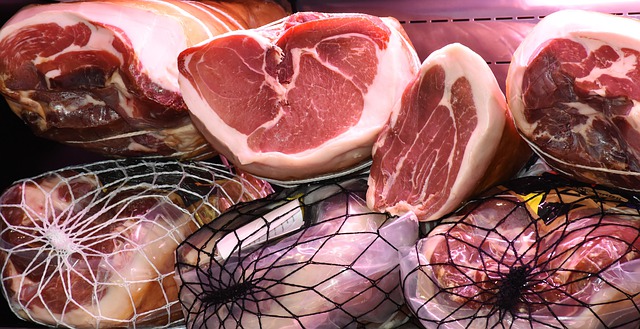
Many years have passed since it was recognised that chemical nitrites and nitrates were an health issue in the curing of meats. The search has been ongoing for natural, even organic sources of these chemicals to help render meat safer to store. It appears now that such ingredients which are derived from vegetables such as chard, beetroot and even celery could be highly successful in the product development process.
Consumers in all cases must rely heavily on fresh meat colour as a clear indicator of wholesomeness at the point of sale. Any deviation suggests the meat is either cooked or gone beyond the point of sale or consumption. It all depends on the preservation of the colour in myoglobin and keeping the distinctive cherry red/pink colour. One way to achieve this has been to stabilise colour loss by the reaction of the muscle haem-containing protein with nitrites.
Whilst there are a number of intrinsic and extrinsic factors in keeping myoglobin’s colour, understanding the fundamental basis of the interaction of the protein with biomolecules is at the heart of finding ingredients suited to the colour stability role. Nitrites not only provide colour stability but they also act in meat as an antioxidant and a suppressor of growth of pathogenic bacteria, especially Clostridium botulinum (Honikel, 2008). Unfortunately, nitrite is an extremely reactive compound and under certain circumstances such as an acidic pH combined with high temperature becomes a nitrosating agent which then produces nitroso compounds called nitrosamines. The nitrosamines generated from nitrite and secondary amines have been found to be carcinogenic for humans generally (Cassens, 1995; Cammac et al., 1999).
Alternatives to nitrites have included adding naturally occurring antimicrobials such as spices and herbs. The most potent include those containing glucosinolates such as mustard seed (Amarowicz et al., 2003; Schuster-Gajzágó et al., 2006), and those with other sulphurous groups such as the biothiols based on glutathione, cysteine or gamma-glutamylcysteine (Manda et al., 2010).
The most recent methods appear to use natural sources of nitrates based on acerola, chard and spinach and are marketed by the Bavaria Corporation International amongst a range of other products for protecting meat. One product, Bafos™ Veg is offered by the Bavaria Corporation International as a clean label USDA/FDA approved ingredient for protecting colour. They also claim to use the acerola extract as an antioxidant to extend the meat’s shelf-life.
References
Amarowicz, A. L., Faustman, C., Liebler, D. C., & Hill, D. (2003). Induction of myoglobin redox instability by adduction with 4-hydroxynonenal. Biochemistry 42, pp. 4398-4405.
Cammack, R., Joannou, C. L., Cui, X. Y., Martínez, C. T., Maraj, S. R. & Hughes, M. (1999). Nitrite and nitrosyl compounds in food preservation. Biochimica et Biophysica Acta – Bioenergetics, 1411(2-3), pp. 475-488
Cassens, R. (1995). Use of sodium nitrite in cured meats today. Food Technology, 49, pp. 72-115.
Honikel, K. O. (2008). The use and control of nitrate and nitrite for the processing of meat products. Meat Science, 78, pp. 68-76
Manda, K. R., Adams, C. & Ercal, N. (2010). Biologically important thiols in aqueous extracts of spices and evaluation of their in vitro antioxidant properties. Food Chemistry 118, pp. 589-593.
Schuster-Gajzágó, I., Kiszter, A. K., Tóth-Márkus, M., Baráth, A., Márkus-Bednarik, Z., & Czukor, B. (2006). The effect of radio frequency heat treatment on nutritional and colloid-chemical properties of different white mustard (Sinapis alba L.) varieties. Innovative Food Science and Emerging Technologies 7, pp. 74-79

I’ve heard of people coating their meat in ashes. My great aunt didn’t have a fridge so she use to wrap the meat in ash from the fireplace. before it was roasted, the ashes were wiped off and then washed. The surface of the meat was slightly ashy but people thought that was part of the curing process and I did not mind the slight taste of smoke – seemed to fit with the process. I suppose it is a bit like tasting charcoal.